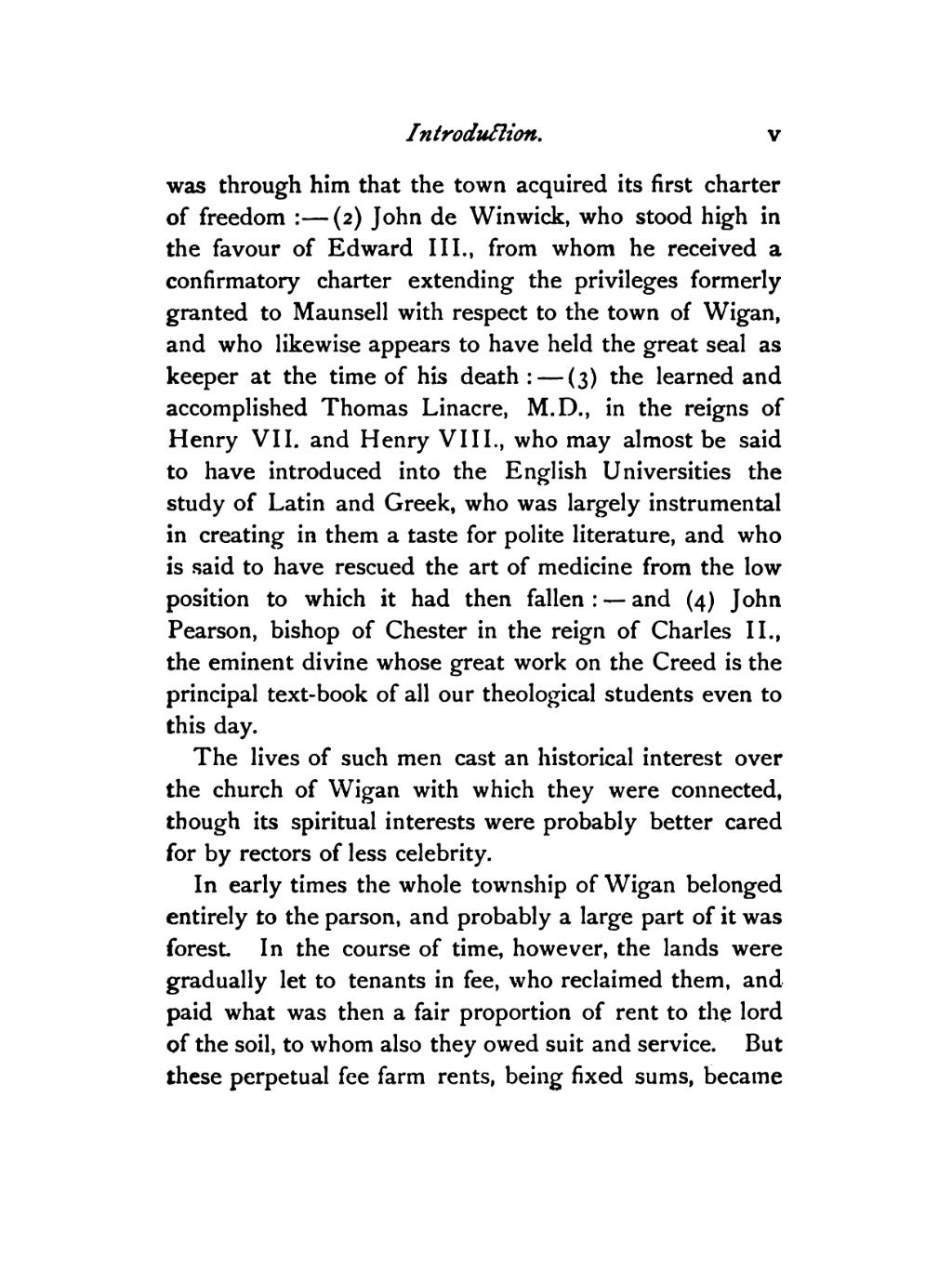was through him that the town acquired its first charter of freedom :— (2) John de Winwick, who stood high in the favour of Edward III., from whom he received a confirmatory charter extending the privileges formerly granted to Maunsell with respect to the town of Wigan, and who likewise appears to have held the great seal as keeper at the time of his death :— (3) the learned and accomplished Thomas Linacre, M.D., in the reigns of Henry VII. and Henry VIII., who may almost be said to have introduced into the English Universities the study of Latin and Greek, who was largely instrumental in creating in them a taste for polite literature, and who is said to have rescued the art of medicine from the low position to which it had then fallen : — and (4) John Pearson, bishop of Chester in the reign of Charles II., the eminent divine whose great work on the Creed is the principal text-book of all our theological students even to this day.
The lives of such men cast an historical interest over the church of Wigan with which they were connected, though its spiritual interests were probably better cared for by rectors of less celebrity.
In early times the whole township of Wigan belonged entirely to the parson, and probably a large part of it was forest. In the course of time, however, the lands were gradually let to tenants in fee, who reclaimed them, and paid what was then a fair proportion of rent to the lord of the soil, to whom also they owed suit and service. But these perpetual fee farm rents, being fixed sums, became
